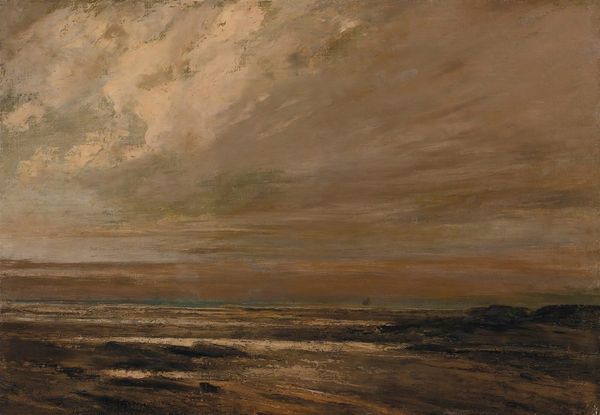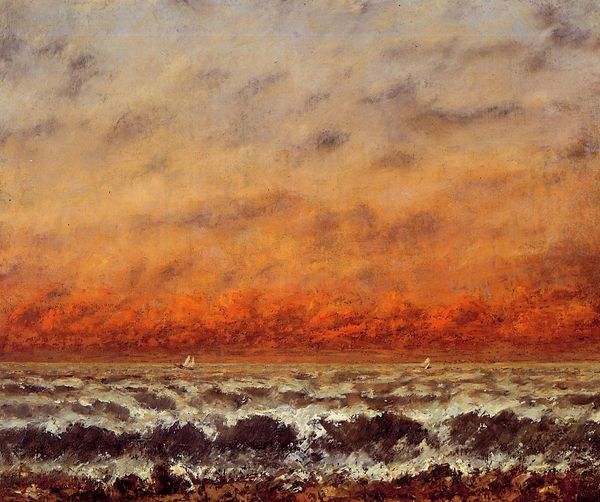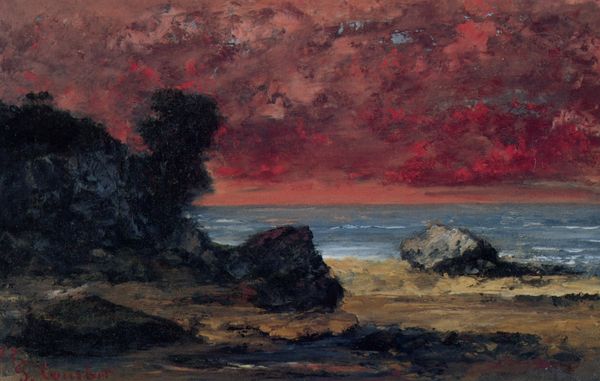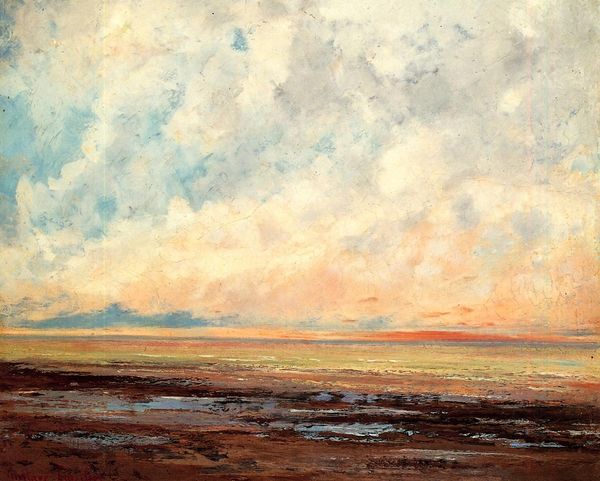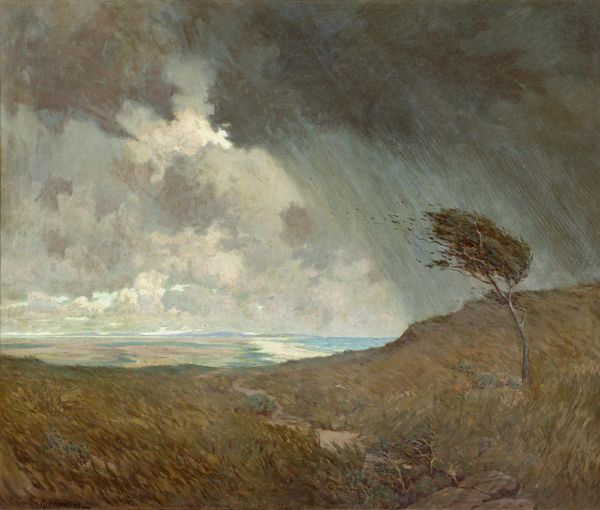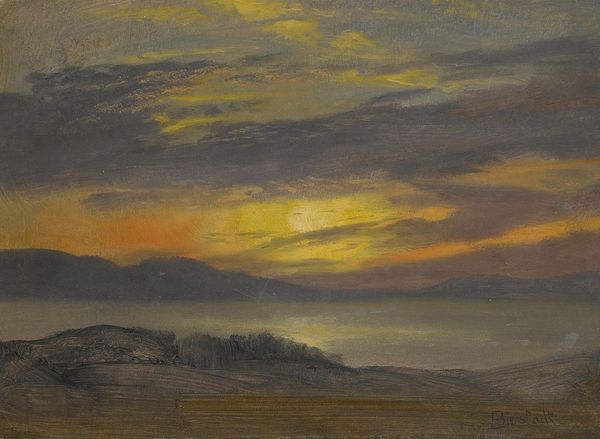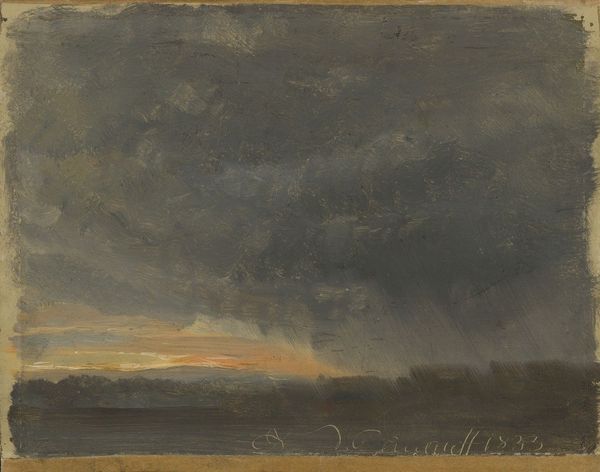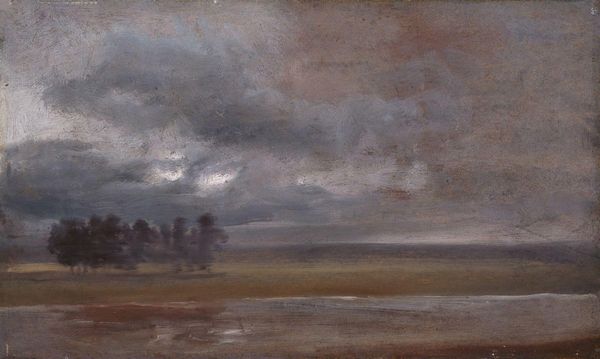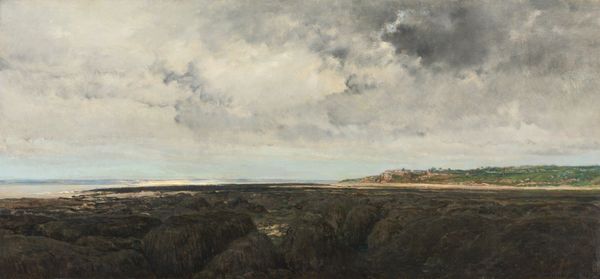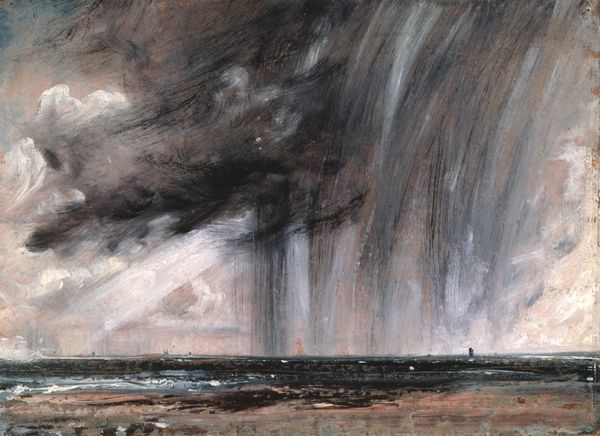
#
abstract expressionism
#
abstract painting
#
landscape
#
impressionist landscape
#
possibly oil pastel
#
oil painting
#
fluid art
#
acrylic on canvas
#
underpainting
#
painting painterly
#
watercolor
Copyright: Public Domain: Artvee
Gustave Courbet painted "The Black Rocks at Trouville" with oil on canvas, using brushes and palette knives. It is tempting to see oil paint as a seamless medium, a way of conjuring an image without evidence of its making. But Courbet’s technique is highly evident. Look closely and you will see the thick impasto and expressive brushwork, and the layering of tones and textures to build a sense of depth and atmosphere. You can imagine him working en plein air, capturing the fleeting effects of light and weather on the Normandy coast. His commitment to recording reality meant engaging with the very stuff of the world – pigment, binder, and support. Rather than disguising the labor involved, Courbet celebrated it. His paintings weren’t windows onto another world, but rather solid objects made with time, skill, and physical effort. They invite us to consider the relationship between artistic creation and other forms of work. The very materiality of the painting becomes a crucial aspect of its meaning.
Comments
No comments
Be the first to comment and join the conversation on the ultimate creative platform.
